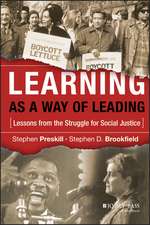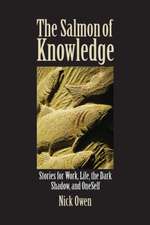Alternative Education: Global Perspectives Relevant to the Asia-Pacific Region: Education in the Asia-Pacific Region: Issues, Concerns and Prospects, cartea 10
Autor Yoshiyuki Nagataen Limba Engleză Hardback – 29 ian 2007
| Toate formatele și edițiile | Preț | Express |
|---|---|---|
| Paperback (1) | 637.93 lei 43-57 zile | |
| SPRINGER NETHERLANDS – 30 noi 2010 | 637.93 lei 43-57 zile | |
| Hardback (1) | 644.30 lei 43-57 zile | |
| SPRINGER NETHERLANDS – 29 ian 2007 | 644.30 lei 43-57 zile |
Din seria Education in the Asia-Pacific Region: Issues, Concerns and Prospects
- 15%
 Preț: 646.62 lei
Preț: 646.62 lei -
 Preț: 386.99 lei
Preț: 386.99 lei - 18%
 Preț: 730.02 lei
Preț: 730.02 lei -
 Preț: 390.84 lei
Preț: 390.84 lei - 15%
 Preț: 587.53 lei
Preț: 587.53 lei -
 Preț: 389.88 lei
Preț: 389.88 lei - 15%
 Preț: 638.43 lei
Preț: 638.43 lei - 15%
 Preț: 635.80 lei
Preț: 635.80 lei - 18%
 Preț: 1117.99 lei
Preț: 1117.99 lei - 15%
 Preț: 638.11 lei
Preț: 638.11 lei - 15%
 Preț: 648.89 lei
Preț: 648.89 lei - 24%
 Preț: 729.89 lei
Preț: 729.89 lei - 20%
 Preț: 551.86 lei
Preț: 551.86 lei - 24%
 Preț: 676.79 lei
Preț: 676.79 lei - 20%
 Preț: 553.79 lei
Preț: 553.79 lei - 24%
 Preț: 797.37 lei
Preț: 797.37 lei - 20%
 Preț: 551.57 lei
Preț: 551.57 lei - 15%
 Preț: 644.30 lei
Preț: 644.30 lei - 20%
 Preț: 557.75 lei
Preț: 557.75 lei - 20%
 Preț: 558.62 lei
Preț: 558.62 lei - 20%
 Preț: 552.44 lei
Preț: 552.44 lei - 20%
 Preț: 565.08 lei
Preț: 565.08 lei -
 Preț: 370.19 lei
Preț: 370.19 lei - 20%
 Preț: 566.19 lei
Preț: 566.19 lei -
 Preț: 382.82 lei
Preț: 382.82 lei -
 Preț: 383.21 lei
Preț: 383.21 lei -
 Preț: 374.76 lei
Preț: 374.76 lei - 20%
 Preț: 566.75 lei
Preț: 566.75 lei - 15%
 Preț: 644.49 lei
Preț: 644.49 lei
Preț: 644.30 lei
Preț vechi: 758.01 lei
-15% Nou
Puncte Express: 966
Preț estimativ în valută:
123.28€ • 129.07$ • 102.01£
123.28€ • 129.07$ • 102.01£
Carte tipărită la comandă
Livrare economică 07-21 aprilie
Preluare comenzi: 021 569.72.76
Specificații
ISBN-13: 9781402049859
ISBN-10: 1402049854
Pagini: 248
Ilustrații: XXIII, 220 p.
Dimensiuni: 155 x 235 x 18 mm
Greutate: 0.53 kg
Ediția:2007
Editura: SPRINGER NETHERLANDS
Colecția Springer
Seria Education in the Asia-Pacific Region: Issues, Concerns and Prospects
Locul publicării:Dordrecht, Netherlands
ISBN-10: 1402049854
Pagini: 248
Ilustrații: XXIII, 220 p.
Dimensiuni: 155 x 235 x 18 mm
Greutate: 0.53 kg
Ediția:2007
Editura: SPRINGER NETHERLANDS
Colecția Springer
Seria Education in the Asia-Pacific Region: Issues, Concerns and Prospects
Locul publicării:Dordrecht, Netherlands
Public țintă
Academic/professional/technical: Research and professionalCuprins
Alternative Education: An Overview.- Case Study: Bolivia A Free School at the Foot of the Andes.- Case Study: Thailand Alternative Schools in a Society Developing the Legal Framework for a Pluralistic Educational System.- Case Study: Australia Issues in Support Mechanisms Involving Alternative Schools.- Case Study: The Netherlands Alternative Education Shaken by Changes in its Basic Foundation.- Case Study: The State of Oregon in the United States of America A Pluralistic Education System and Alternative Education Supported by the Law and the Key Initiators.- Case Study: Denmark Alternative Education Fostered by Support Mechanisms Cultivated Through the History of the Common People.- How Much Alternative Education Is There?.- Quality Assurance in Alternative Education: Current Circumstances and Issues.- The State of Alternative Education in Different Countries.
Textul de pe ultima copertă
Alternative streams of education have been and remain an important but difficult theme for teachers, parents, policy-makers, and scholars. By focusing on case studies of six countries (Bolivia, Thailand, Australia, USA, The Netherlands, and Denmark), and by comprehensively analysing these by means of international comparative methodologies, the author approaches the nuts and bolts issues of alternative and mainstream education systems. The case studies include Charter Schools in the USA and Waldorf Schools in Australia. The study presents not only an insightful analysis of alternative forms of education with regard to actual issues in societies and also legal and administrative features of education. It provides insights into the kind of school development that could be appropriate in the 21st century and the types of educational communities we should seek to create in the age of globalisation.
Caracteristici
Real education but facing realities in our society International comparative study showing us how to develop our school and educational community Voices from real educators from six country case studies Chapters indicating how to develop schools in the 21st century















